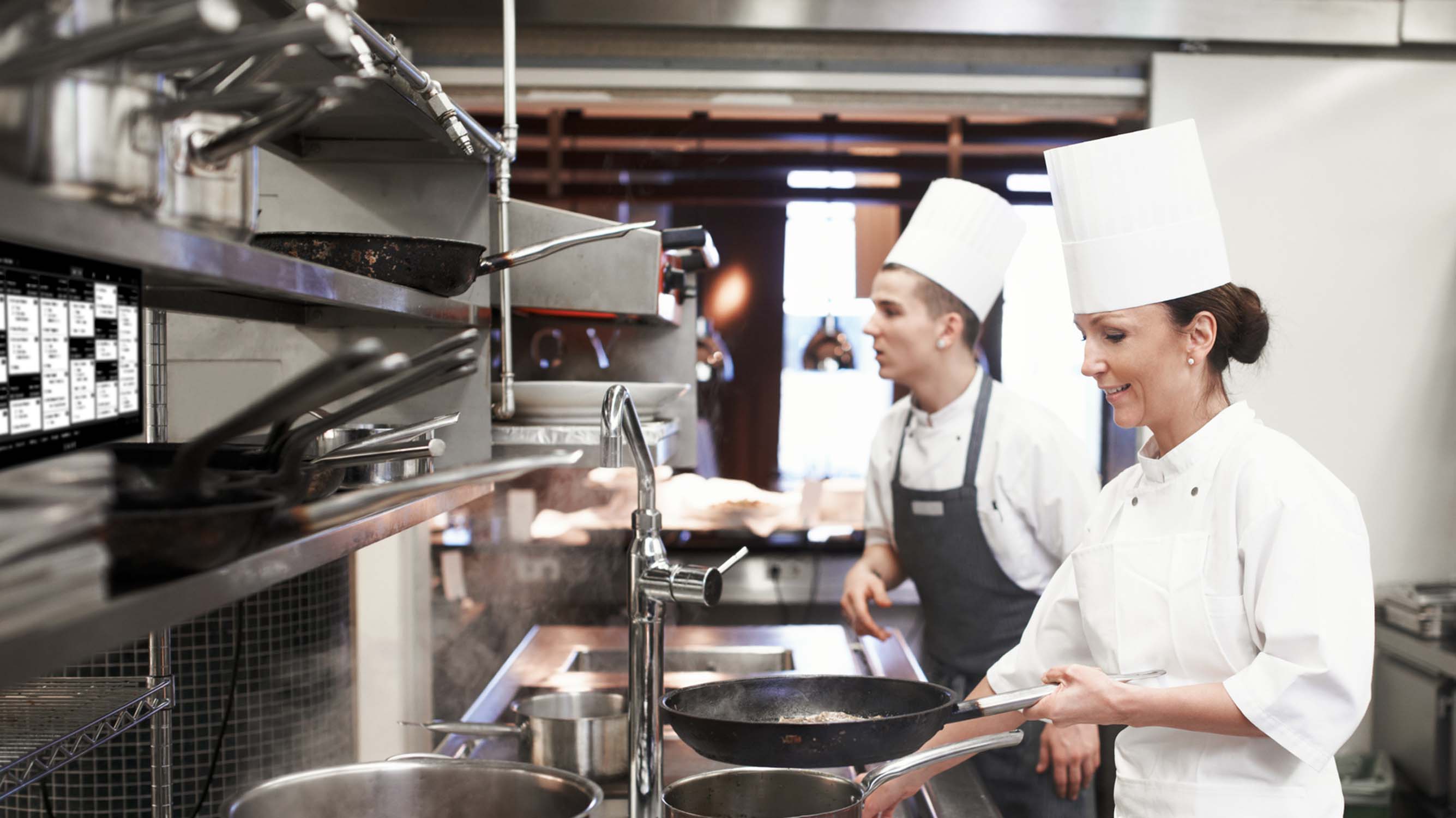Why You Need a Kitchen Display System for Your Restaurant
April 11th, 2024
Share:

The days of handwritten and printed ticket orders are becoming relics of the past, making way for a modern solution: the kitchen display system (KDS).
This shift from paper to pixels aims to overcome challenges posed by the chaotic, hot, and noisy environments typical of restaurant kitchens. Let’s dive into the world of kitchen display systems and how your restaurant can benefit from one.
What is a Kitchen Display System and How Does It Work?
A kitchen display system is a digital screen that you install in the kitchen and connect to your restaurant POS system. It displays orders from the point of sale system, along with details such as table number, order number, items, modifiers, special requests, and time elapsed since the order was placed.
The KDS also updates tickets in real time, showing order statuses such as new, ready, or delivered. It can also communicate with other devices, such as printers, or tablets, to streamline order management and delivery.
You can easily fit a KDS into your restaurant’s operations in several ways, including:
- Customize the display to suit your needs and preferences by choosing a layout, order type colors, and font size.
- Set up different stations for different types of food, such as appetizers, entrees, or desserts.
Key Features of a Cutting-Edge KDS
A kitchen display system can improve order accuracy, speed, and quality of service — all while reducing food waste and operational costs. However, not all systems are created equal. You need one that can handle the demands of a modern restaurant and offer the best features and benefits.
Your KDS non-negotiables should include:
- Easy Implementation: Time is money, so choosing a system that will get you up and running in minutes is a necessity.
- User-Friendly Interface: Your KDS should be as modern and responsive as the rest of your restaurant tech with simple navigation.
- Real-Time Analytics: A KDS should conveniently display average and longest ticket times, making it easy for you to monitor efficiency and make real-time improvements.
- Multi-Channel Fulfillment: Your KDS should be able to route and fulfill multiple order types simultaneously from various screens to quickly handle dine-in, takeout, delivery, and online orders.
Benefits of a KDS for Restaurants
A kitchen is the heart of any restaurant; it can make or break your customer experience and bottom line. That’s why many restaurants are turning to a kitchen display system to streamline their operations and improve their service quality. With a KDS in place, you can expect to enjoy several benefits.
Efficient Order Management
The main advantage of a KDS is managing your orders more efficiently and accurately. According to a 2023 survey, nearly 68% of diners at quick service restaurants expect their orders to be ready within 15 minutes. With the improved efficiency that comes with a KDS, this can be easily achievable.
By displaying the orders on a digital screen, you can eliminate the need for paper tickets and printers, which can be wasteful, messy, and potentially result in lost tickets.
FOH & BOH Communication
Implementing a KDS into your restaurant can also improve communication between your front-of-house and back-of-house staff. In fact, studies show that a KDS can reduce order errors by 56%.
A kitchen display system can reduce mistakes and confusion caused by illegible handwriting, misplaced tickets, or duplicate orders. It helps prioritize your orders based on the time, the table, the course, or the customer preference and update them instantly. This ensures that the kitchen and the front-of-house staff are always on the same page.
How to Get Started with a KDS for Your Restaurant
You might wonder how to start if you're considering a KDS for your restaurant. The good news is it's less complex or expensive than you might think. Here’s the typical process for implementing a kitchen display system.
1. Install and Configure Your KDS
The first step is setting up the KDS in your kitchen. Your POS system may already offer kitchen display systems that you can easily integrate into your existing operations. Check out the modern POS hardware that SkyTab offers, for example.
Once your KDS has been installed, follow the instructions and guidelines provided to set up your KDS parameters in your POS back office. You should configure your menu, modifiers you’d like to have in place, ticket settings for different stations, and any other settings that your restaurant requires.
Remember to test and troubleshoot your KDS before using it in your daily operations, and make sure that your staff is trained and familiar with its features and functions.
2. Monitor and Optimize Your KDS
The final step is to monitor and optimize your KDS performance and results. Your POS provider should be consistently perfecting your KDS software with updates. Keep an eye out for the latest and greatest versions of the software to take advantage of new features and improvements.
Also, review and analyze data and reports provided by your KDS and use them to improve your restaurant operations.
Ready to Elevate Your Kitchen Operations?
If your kitchen isn’t running like a well-oiled machine, then your restaurant won’t perform to its potential. That’s why implementing solutions like a kitchen display system can make a substantial impact on your business’s operation as a whole.
However, choosing the right kitchen display system is crucial for a seamless kitchen workflow. Consider factors like size, features, and cost. You’ll want the right solution that balances performance with value like SkyTab’s KDS for only $29.99/month.
Are you ready to learn more? Book a demo to see how a kitchen display system can transform your operations.